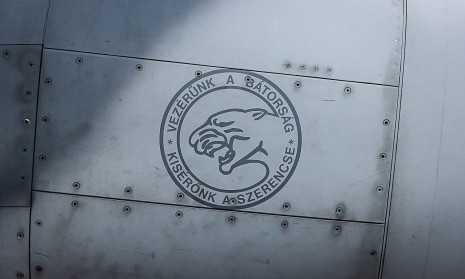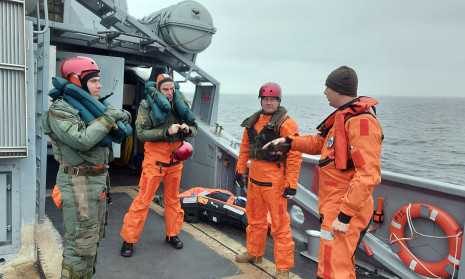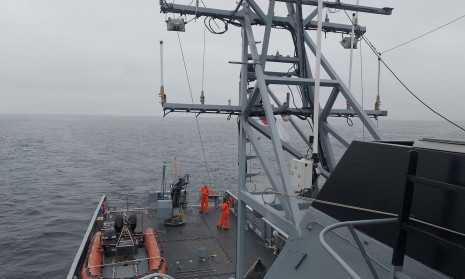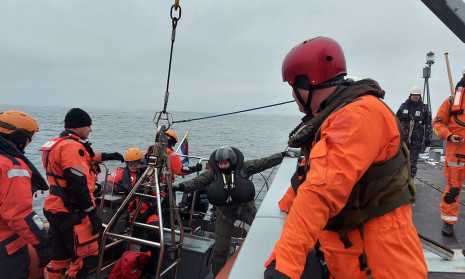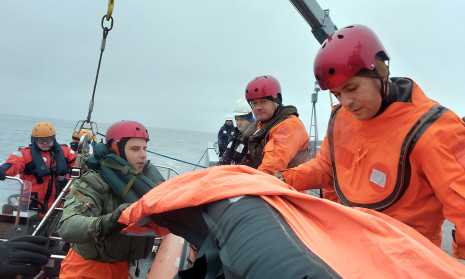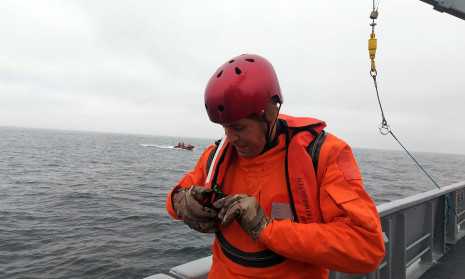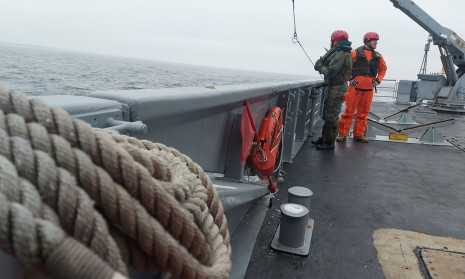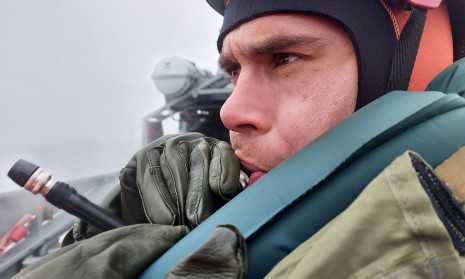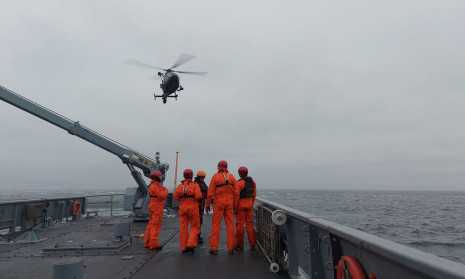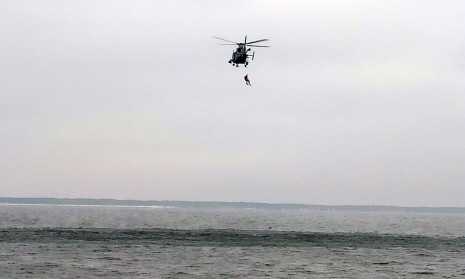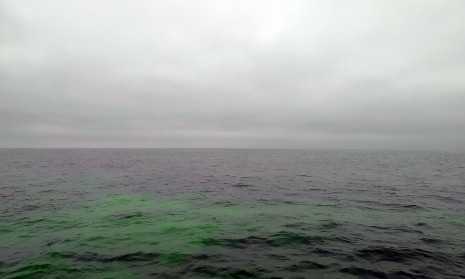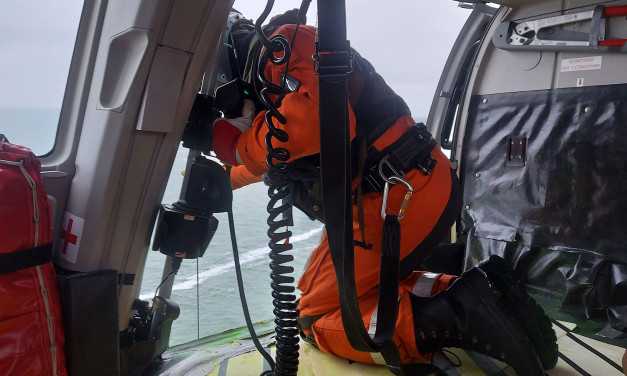Hungarian fighter pilots rescued from Baltic Sea
Text: Xénia Szausev | 15:08 November 29, 2022For the first time, the nominated personnel of the HDF 59th Dezső Szentgyörgyi Air Base were involved in an open-sea search and rescue exercise, conducted with the participation of Hungarian airmen serving in the lead nation role of the Baltic Air Policing mission and the members of the Polish detachment, which is to rotate them out on 1 December. The rescue was part of a multinational search and rescue (SAR) exercise coordinated and organized by the Lithuanian air force and navy, in which two fighter pilots from each of the two nations and their own observer teams played the main role.

This search and rescue action provided the pilots with an excellent opportunity to experience and practice – under harsh and extreme circumstances – the situation that evolves minutes after they fall into the sea, and the start of a chain of communication, which ensures and supports the success of the search and rescue effort. During the simulation, a warship of the Lithuanian navy transported the participants to a given coordinate point on the open Baltic Sea.
The pilots were further transported by rubber raft to the extraction point, where they jumped into the water and started floating while waiting for the rescue. Their flight suits worn for flying over water are different from their ordinary clothing: they don a waterproof suit with thermal underwear, which keeps water and the cold off their body surface and so extends the pilots’ survivability in water by several minutes.
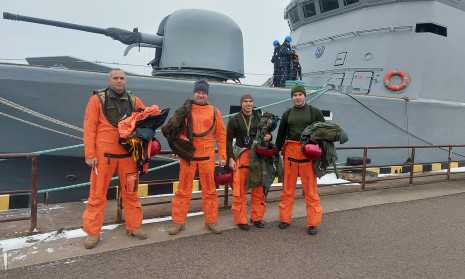
The survival kit under the ejector seat is part of the protective equipment (which separates on ejection and reaches the ground or water together with the pilot). It includes an inflatable raft whose two sides with the zip in the middle are convertible into a tent.
The fluorescent green dye that spreads over the surface of the water further assisted the rescue operation. Used to make the pilots’ position known, these sea dye markers are easy to carry in the pocket of the life vest or in the security kit of a life raft. The bright green pattern remains visible on the water for at least 30-40 minutes in a range of around 1.5 kilometers. This tool assists the crew of the SAR helicopter in visually locating the pilot from the air and finding him, so they can extract him from the water.
This was the first time that the Kecskemét pilots and the observer team had the opportunity to participate in such a coordinated search and rescue effort on the open sea.
